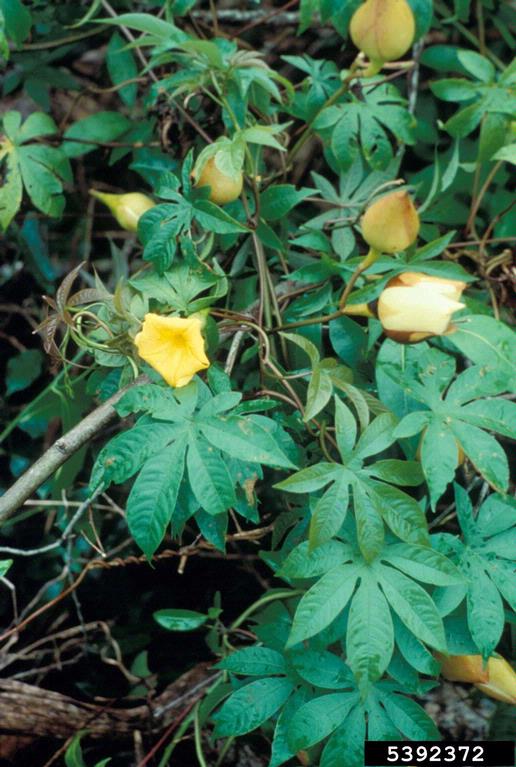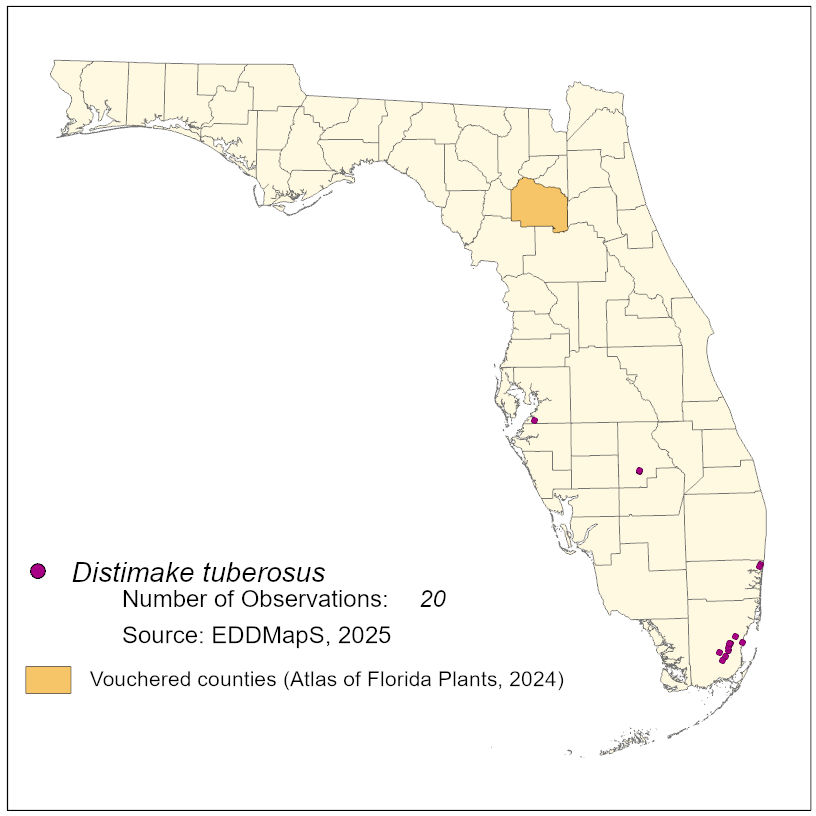Common Name: Spanish arborvine
Family: Convolvulaceae
Common Synonyms: Ipomoea tuberosa, Merremia tuberosa
USDA Hardiness Zone: 9b -11
Growth Habit: Vine
Origin: Central America
FISC Category: 2
FDACS Listed Noxious Weed: No
Introduction Date: Before 1913
IFAS Assessment:

Perennial, woody to herbaceous vine. Leaves alternate, simple, palmately lobed, elliptic. Flowers showy, solitary, yellow, tubular, 6 cm wide, and on long stalks. Sepals large, brown, persist after the flower and surround the fruit (resembling a wooden rose). Fruit a round, capsule with 1-4 hairy, black seeds.
Hammocks, forests, riverine forests
Vouchered in Monroe, Dade, Broward, and Hillsborough Co. Weed of disturbed areas. Very aggressive in hardwood forests. Seeds viable for long periods of time. Seeds water dispersed. Wood roses used in floral arrangements.

NA
Dave's Garden. 2013. PlantFiles: Wood rose, Spanish morning glory, yellow morning glory, Merremia tuberosa. http://davesgarden.com/guides/pf/go/31829/. Accessed on December 10, 2013.
Langeland, K.A., H.M. Cherry, C.M. McCormick, K.C. Burks. 2008. Identification and Biology of Non-Native Plants in Florida's Natural Areas-Second Edition. IFAS Publication SP 257. University of Florida, Gainesville, Florida.
Langeland, K.A., J.A. Ferrell, B. Sellers, G.E. MacDonald, and R.K. Stocker. 2011. Integrated management of non-native plants in natural areas of Florida. EDIS publication SP 242. University of Florida, Gainesville, Florida.